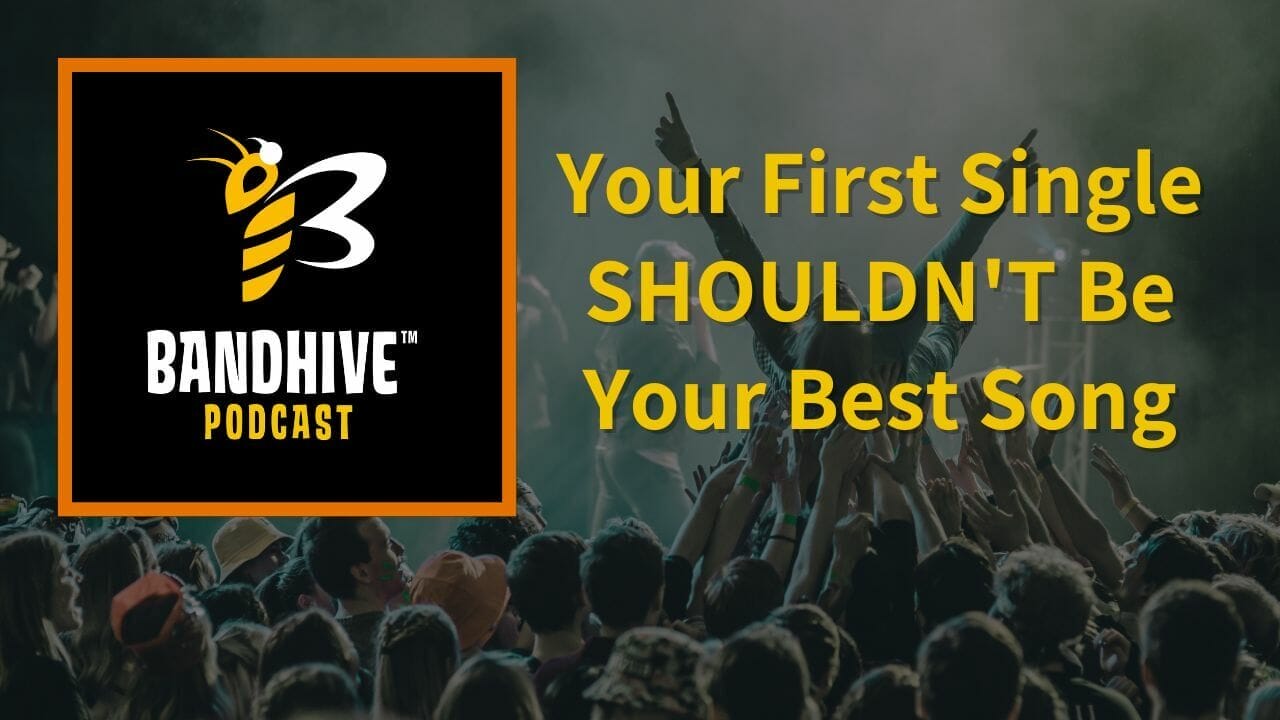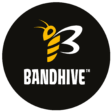[00:00:00] Welcome to episode 154 of the Bandhive Podcast.
It is time for another episode of the Bandhiveive podcast. My name is James Cross and I help independent artists tour smart. A few weeks ago I dropped an episode called the setlist Sandwich. Do this for every show you play, and people seem to really resonate with that topic. But what you might be surprised to learn is that the same thing applies to your marketing campaigns, I'll get more into this in a second, but to sum up the setlist sandwich, it was that you should start and end your set with high energy.
And in the middle is where you can put those juicier cuts, the more melancholy songs, the softer songs, the songs that show you have feelings and emotions and all that kind of stuff. And that's not to say that your high energy songs can't show feelings and emotion. , but they probably don't show the same emotions as the songs that you put in the middle of your set.
you're trying to hook the audience right away and then give them some more content of substance, and then at the very end of [00:01:00] your set, you're leaving them on a high note. And the same thing goes for your marketing campaigns. You don't want to have the first single be the strongest song on the release.
Rather, it should be a close second.
Now, before you start throwing rocking fruit at me saying, No, of course, we want the first song to be the best one. Hear me out. You close your set with something that leaves the audience remembering you on a high note, right? Your entire set is building up to that moment through the, out in the flow of the setlist sandwich.
You're building up to that Because the goal is to keep your audience hooked the entire time you're on stage. and a release campaign is no different. By starting with your strongest track as the lead single, you're showing your hand. It's literally all downhill from there because people who loved that song might be disappointed by the rest of the songs, and you don't want that because then you're setting them up to say, "Eh, that one song was good. The rest not so much. Whatever."
You've set the bar up here and the rest of what you're delivering is here. That's not how you want it to go,[00:02:00] On the other hand, you don't wanna go too far and make your first single, the weakest song on the release. It's a careful balancing act.
cuz if you start down here and then try to bring it up, Well maybe people tuned out down here because it wasn't that good. my recommendation would be to drop two singles before an EP or three singles before a full length release.
So for an ep, your first single is gonna be the second best song on that release. While a song that's an absolute banger will be your second single shortly before the release with a full length, you do essentially the same thing. You start off with the second best track.
Then in the middle you have the third best track and then you leave your absolute stellar track as the final single before release. This way you give your fans the chance to hear some new material, but they won't be disappointed by what comes next.
you're also dropping songs that are good enough at this point. So people who haven't heard of your music before aren't gonna be turned away by a bad song.
You're still choosing the second best track on the release Like I was [00:03:00] saying earlier, it's an extension of the setlist sandwich. You're building energy up to your new release. So while the timeframe and the number of songs is different, cuz you're only working with two or three songs here, your goal is similar.
You're getting people interested enough in your music that they'll listen to. You're dropping that first song and you're hooking the audience with that, and then you want to go uphill. You don't wanna go downhill, which is what happens if you start with the strongest song.
Instead, you go uphill, and that way you're building to more and more. of course, when you get to the actual release, not everything on there is gonna be a single, and that's fine. People know that a full release probably isn't gonna be full of single. like, that's just how it is.
Not every song is a single. Some of my favorite songs of all time are album cuts, but if the artist released it as a single, I'd say, What were you thinking? Why would you do that? that's not single material. I may love the song, but that's because I love that song. In the context of the album, I don't necessarily love it [00:04:00] as something I'm hearing for the first time from an artist.
The context really matters. So you might be wondering now about the order of tracks on your release. In general. A lot of artists, especially back about 20, 30 years ago, would top load the strongest songs to the first half of the release. This was because when you were dealing with vinyl or tape, people would listen to one side and not necessarily flip it over if they didn't like the first half.
So you had to get them hooked on that first half, and then when they flipped, Maybe it wasn't as great, but they had the first half to listen to. Still. Other artists choose to tell a story and more or less ignore the strength of the song when they're choosing the order. Obviously, this only works if your songs are generally good enough.
If your songs aren't that great, this isn't gonna work. People will tune out. Still other artists will turn the order of the album into some kind of mystery. For example, on afis record Sing The Sorrow, which came out almost 20 years ago, and back in March of 2003, the Leaving Song [00:05:00] part two, which is Track two on the album, actually comes before the leaving song, which is track 10 or 11. If I. That's when you play the album, starting at Track One. Instead, there's a popular fan theory that the story actually starts with Bleed Black, which is track three, and it loops around through the rest of the album, including the hidden tracks of the spoken word and this time in Perfect.
Then it gets to the intro track track number one, Miseria Cantare, and Ends with the Leaving Song part too. If you wanna read this theory, I'll have it linked in the show [email protected] slash 1 54. That's the numbers one 50. And you can check that out. But point being, there's a mystery here. I don't know if this was intentional knowing afi, it probably was Because they do a lot of stuff like this, or at least they used to, and their fans would just eat it up. They would spend hours trying to solve these mysteries, and it really is one of the things that tightened the community. It tightened the despair faction and it brought people to AFI [00:06:00] and kept those fans engaged with the band and their music.
That's fantastic. Now most bands don't have fans that are gonna look that deeply into anything, but this is how much of your track list could matter depending on your music, If you're aiming for casual fans, I would absolutely suggest just top loading your track list. But on the other hand, if you want to create a deeper connection with your audience, You could put a story out.
You don't have to go and make it a mystery, but it never hurts to drop some breadcrumbs or Easter eggs. The main thing is get your fans to listen to the release by properly leading up to it. Don't show your hand too early and be sure that you save the best track for the final single before the full release.
That does it for this episode of the Bandhive podcast. Thank you so much for tuning in and listening. I really appreciate it, and I hope that this kind of extension of the setlist Sandwich episode will help you choose your singles as well as your album track listing or your EP track listing. If you haven't heard the episode about the setlist sandwich yet, I [00:07:00] highly recommend it.
It's number 1 51 and it's called the setlist sandwich. Do this for every show you play. You can find [email protected] slash 1 5 1. That's the number 151, or you can go to your favorite podcast app and pull up that episode Speaking of sandwiches, I'm gonna sandwich in a quick promo here before I sign off, and that's for our Facebook community. If you want to be in a community. As of right now, on October 21st, 2022, almost 700 like-minded musicians who are trying to learn about the business side of things, you're absolutely welcome to join us.
Just head on over to Bandhive.rocks/group or search for Bandhive on Facebook. Again, Bandhiveive.rocks/group, which will automatically redirect you to our URL on Facebook. Or you can search for Bandhive. That's B A N D H I V E We'll be back next Tuesday at 6:00 AM with another brand new episode of the Bandhive Podcast. Until then, I hope you have a great week. Stay safe, and of course, as always, keep rocking.


